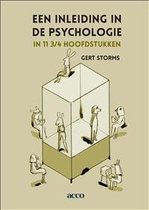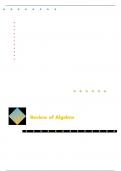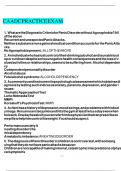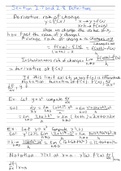Experimentenlijst + belangrijke namen
Psychologie (REVAKI / LOBW)
Hoofdstuk 1: Om te beginnen
- Freud & Jung: geneesheren
- Stanovitch: Freudprobleem
- Rush: aderlatingen (systematisch empirisme)
- Popper: Psychoanalyse is niet falsifieerbaar (toetsbare theorieën en uitspraken)
- Warrington en Shallice: levende vs niet levende concepten (gevalstudie)
- Caramazza: 2 verklaringen voor semantische kennen (zelfde gevalstudie)
- Claeys & collega’s: versch procedures om persoonlijkheidstrekken te meten
(correlationele studie)
- Kuppens, Realo & Diener: cognitieve evaluatie en a ectieve component in versch
culturen (correlationele studie)
- Klein & Hodges: verschil in empatisch vermogen bij mannen en vrouwen (experimenteel
onderzoek)
- Rosa: Therapeutic touch (experimenteel onderzoek)
Hoofdstuk 2: Pavlovs hond en Thorndikes kat
- Pavlov: klassieke conditionering (hond)
- Thorndike: puzzle-box
- Garcia: vergiftigd lamsvlees voor coyotes (voedselaversie)
- Garcia & Koeling: ratten en drinken van smaakoplossing (aversie)
- Plaud & Martini: erotische foto’s gelinkt aan neutrale objecten
- Skinner: operante conditionering (Skinnerbox)
- Guthrie & Horton: katten in kooi (bijgeloof)
- Skinner: hongerige duif in skinnerbox (bijgeloof)
- Wagner & Morris: kinderen bij robot die knikkers spuwt (distinctief bijgelovig gedrag)
- Ono: zoveel mogelijk punten scoren met hendels (bijgeloof)
- Gallup: chimpansees in kooi met spiegel (zelfherkenning)
- Epstein, Lanza & Skinner: Duiven in een kooi, stippen en spiegel
1
Samenvatting psychologie 1ste bach (REVAKI / LOBW)
, Hoofdstuk 3: De wortel en de stok
- Grandberger & Brown: monty hall dilemma bij studenten
- Herbranson & Schroeder: zelfde maar bij duiven (wet van e ect wel aanwezig)
- Breland & Breland: muntstuk in spaarpot door varkens (instinctieve drift)
- Miller & Estes: 9 jarige jongens, aangeven waar hoge wenkbrauwen zijn, betaalt vs niet
betaalt
- Glucksberg: kaars rechtop zetten tegen muur, betaalt vs niet betaalt, moeilijk vs
makkelijk
- Havinghurst, Terrel & Spence: tastbare vs verbale beloning (leeftijd en sociaal milieu)
- Vogel & Annau: duif pikken op antwoordsleutel van 4x4, juist: voedselkorrels (bijgeloof)
- Schwartz: Zelfde als hierboven maar 5x5 en met mensen ook (bijgeloof)
2 hierboven, vb confirmation bias (H9)
- Deci: campuskracht, betaald vs niet betaald en betaling werd stop gezet (motivatie)
- Deci: moeilijke puzzels, zelfde concept
- Kohn: ondermijnende e ect van beloning op intrinsiek gemotiveerd gedrag
- Lepper, Greene & Nisbett: tekentaak bij kleuters (aangekondigde beloning vs beloning vs
geen beloning)
- Rothe: Amerikaanse lassers, PFP vast inkomen
- Perry, Engbers & Yun: analyse van PFP
- Kohn: ondermijnend e ect van beloning in arbeidsituaties (competitie)
- Heath: inschatten van intrinsieke en extrinsieke factoren, zelf en voor iemand anders
- Hart, De Wolf, Wozniak & Burts: kinderen observeren op speelplaats
- Cerasoli, Nicklin & Ford: kwalitatieve vs kwantitatieve prestatieverschillen
- Iyengar & Lepper: anagrammen oplossen in 3 versch condities, 2 versch culturen
(keuzevrijheid), (ook exp in schoolse context, zelfde opzet)
Hoofdstuk 5: Is daar iemand?
- Bayer: eetgedrag kippen (alleen vs in groep)
- Harlow: eetgedrag ratten (alleen vs in paar)
- Ader & Tatum: elektrische draad bevestigd aan kuit, alleen vs duo’s (sociale
belemmering)
- Pessin: Leren van 3letterwoorden, alleen vs passief publiek (sociale belemmering)
- Gates & Allee: kakkerlakken in E-vormig doolhof, alleen vs duo vs trio (sociale
belemmering)
- Travis: stift op stip houden (sociale facilitatie)
- Chen: nestbouwgedrag van mieren, alleen vs duo vs trio (sociale facilitatie)
- Zajonc: sociale activatiehypothese (dominante respons)
2
Samenvatting psychologie 1ste bach (REVAKI / LOBW)
Psychologie (REVAKI / LOBW)
Hoofdstuk 1: Om te beginnen
- Freud & Jung: geneesheren
- Stanovitch: Freudprobleem
- Rush: aderlatingen (systematisch empirisme)
- Popper: Psychoanalyse is niet falsifieerbaar (toetsbare theorieën en uitspraken)
- Warrington en Shallice: levende vs niet levende concepten (gevalstudie)
- Caramazza: 2 verklaringen voor semantische kennen (zelfde gevalstudie)
- Claeys & collega’s: versch procedures om persoonlijkheidstrekken te meten
(correlationele studie)
- Kuppens, Realo & Diener: cognitieve evaluatie en a ectieve component in versch
culturen (correlationele studie)
- Klein & Hodges: verschil in empatisch vermogen bij mannen en vrouwen (experimenteel
onderzoek)
- Rosa: Therapeutic touch (experimenteel onderzoek)
Hoofdstuk 2: Pavlovs hond en Thorndikes kat
- Pavlov: klassieke conditionering (hond)
- Thorndike: puzzle-box
- Garcia: vergiftigd lamsvlees voor coyotes (voedselaversie)
- Garcia & Koeling: ratten en drinken van smaakoplossing (aversie)
- Plaud & Martini: erotische foto’s gelinkt aan neutrale objecten
- Skinner: operante conditionering (Skinnerbox)
- Guthrie & Horton: katten in kooi (bijgeloof)
- Skinner: hongerige duif in skinnerbox (bijgeloof)
- Wagner & Morris: kinderen bij robot die knikkers spuwt (distinctief bijgelovig gedrag)
- Ono: zoveel mogelijk punten scoren met hendels (bijgeloof)
- Gallup: chimpansees in kooi met spiegel (zelfherkenning)
- Epstein, Lanza & Skinner: Duiven in een kooi, stippen en spiegel
1
Samenvatting psychologie 1ste bach (REVAKI / LOBW)
, Hoofdstuk 3: De wortel en de stok
- Grandberger & Brown: monty hall dilemma bij studenten
- Herbranson & Schroeder: zelfde maar bij duiven (wet van e ect wel aanwezig)
- Breland & Breland: muntstuk in spaarpot door varkens (instinctieve drift)
- Miller & Estes: 9 jarige jongens, aangeven waar hoge wenkbrauwen zijn, betaalt vs niet
betaalt
- Glucksberg: kaars rechtop zetten tegen muur, betaalt vs niet betaalt, moeilijk vs
makkelijk
- Havinghurst, Terrel & Spence: tastbare vs verbale beloning (leeftijd en sociaal milieu)
- Vogel & Annau: duif pikken op antwoordsleutel van 4x4, juist: voedselkorrels (bijgeloof)
- Schwartz: Zelfde als hierboven maar 5x5 en met mensen ook (bijgeloof)
2 hierboven, vb confirmation bias (H9)
- Deci: campuskracht, betaald vs niet betaald en betaling werd stop gezet (motivatie)
- Deci: moeilijke puzzels, zelfde concept
- Kohn: ondermijnende e ect van beloning op intrinsiek gemotiveerd gedrag
- Lepper, Greene & Nisbett: tekentaak bij kleuters (aangekondigde beloning vs beloning vs
geen beloning)
- Rothe: Amerikaanse lassers, PFP vast inkomen
- Perry, Engbers & Yun: analyse van PFP
- Kohn: ondermijnend e ect van beloning in arbeidsituaties (competitie)
- Heath: inschatten van intrinsieke en extrinsieke factoren, zelf en voor iemand anders
- Hart, De Wolf, Wozniak & Burts: kinderen observeren op speelplaats
- Cerasoli, Nicklin & Ford: kwalitatieve vs kwantitatieve prestatieverschillen
- Iyengar & Lepper: anagrammen oplossen in 3 versch condities, 2 versch culturen
(keuzevrijheid), (ook exp in schoolse context, zelfde opzet)
Hoofdstuk 5: Is daar iemand?
- Bayer: eetgedrag kippen (alleen vs in groep)
- Harlow: eetgedrag ratten (alleen vs in paar)
- Ader & Tatum: elektrische draad bevestigd aan kuit, alleen vs duo’s (sociale
belemmering)
- Pessin: Leren van 3letterwoorden, alleen vs passief publiek (sociale belemmering)
- Gates & Allee: kakkerlakken in E-vormig doolhof, alleen vs duo vs trio (sociale
belemmering)
- Travis: stift op stip houden (sociale facilitatie)
- Chen: nestbouwgedrag van mieren, alleen vs duo vs trio (sociale facilitatie)
- Zajonc: sociale activatiehypothese (dominante respons)
2
Samenvatting psychologie 1ste bach (REVAKI / LOBW)











